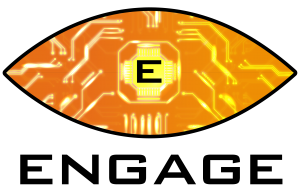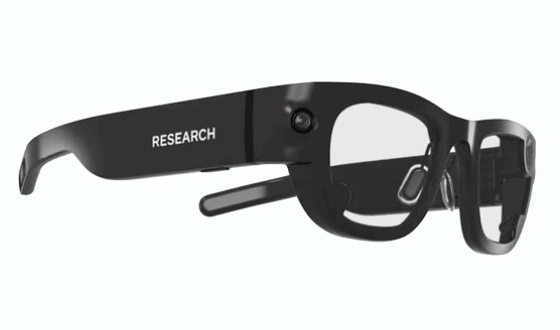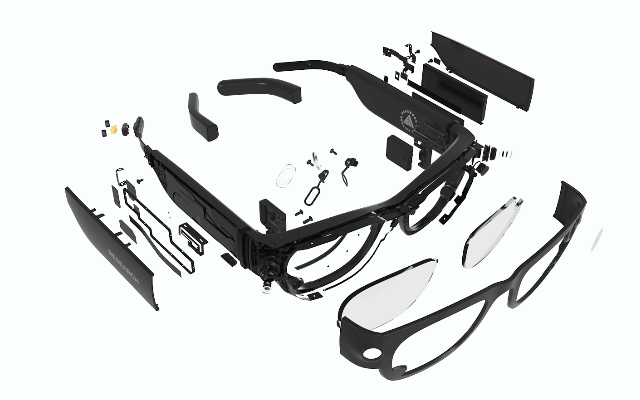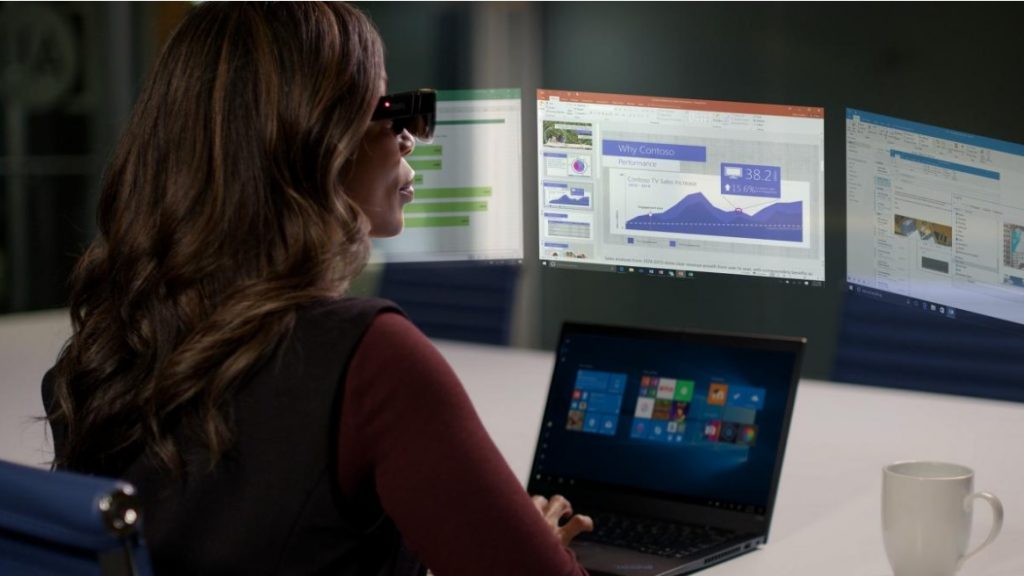
Unlike virtual reality, augmented reality (AR) is not limited to a wearable device. AR is being implemented more and more on smartphones, thanks to apps like Snapchat, as well as on projectors, and PC. It has often been said that AR will actually become more mainstream than VR. Although this technology has huge potential for mass adoption, it is often less understood than even virtual reality.
Smart Glasses are widely considered as the next big breakthrough for wearables that will soon become part of our daily lives. Putting virtual screens in front of our eyes for consumers to use on a daily basis is a challenge that both start-ups and major tech players have struggled to try and make a reality in recent years, but that could be about to change.
Apple are already confirmed to be working on their first generation of Smartglasses, and although recent rumours suggest the release it likely to be delayed until 2022, when Apple get involved, things often explode. The AR market is waiting for its first mass market device, and those hoping Apple will be the ones to provide it could be proved right, if the $499 price tag rumours prove accurate. If history has taught us anything, its that when Apple do something, everyone else tries to copy it.
With Apple not being the first to market, we will take a look at the pioneers of AR Smartglasses, showcasing the best of available AR, from the likes of Microsoft’s Hololens and Google Glasses, to the Magic Leap One. Unfortunately, most are still only designed for enterprise, but that doesn’t mean you cant get your hands on one, if you’ve got deep pockets.
If the Apple rumours are to believed, they already have a rival coming. Facebook have already confirmed that it too plan to launch Smartglasses in 2021. With augmented reality at the heart of it, merging virtual and physical worlds by overlaying data onto the world around you. Facebook already have a foothold in the virtual world market, having launched the extremely popular Oculus Quest 2 headset at the back end of 2020. The Quest 2 has sold millions of units since, and Facebook see similar potential in an AR counterpart.
What are AR Smartglasses?
When we talk about augmented reality smartglasses, or AR in general, we are focusing on eyewear that has the technology built in to merge what we see in the real world with an array of virtual information, which is overlaid onto one of the glasses lenses.
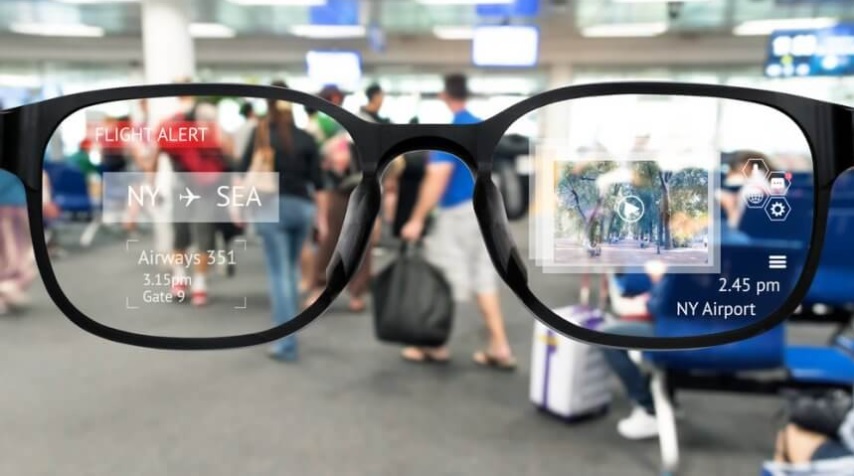
This overlay would be a recreation of what we are more familiar with seeing on our smartphones. We would be able to send and receive messages, check our social media, take photos or even use GPS navigation for directions, amongst much more. The Smartglasses themselves will take on the same design as regular eye glasses that millions of people already wear. The hope for AR Smartglasses is to one day replace the smartphone altogether.
Users would be able to use their Smartglasses anywhere, and with total visual privacy. Even though the wearer can see the information through the lens, to the outside, it would look like a regular pair of glasses. With an internet connection, the AR Smartglasses can do everything a smartphone can, but also free up both hands at the same time.
List of the best augmented reality glasses
Here is a list of the best AR Smart Glasses you can buy today:
Magic Leap One
Price: (from) $2,295 Buy: Magicleap.com
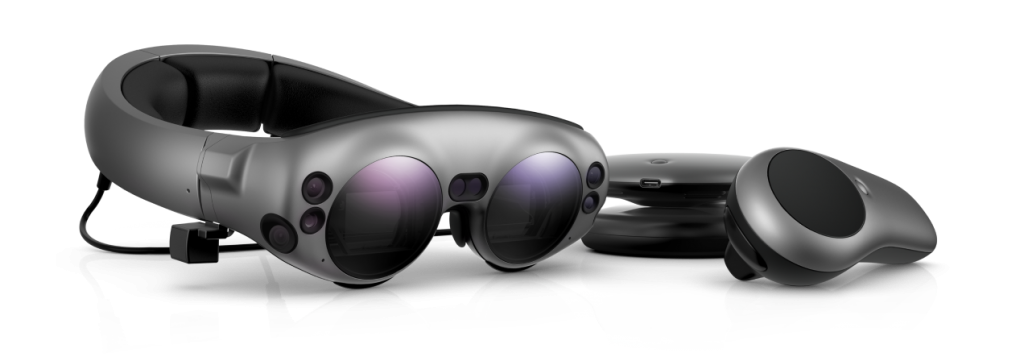
Before we really get to the best we wanted to start with the one that was potentially the best, but ultimately, the one that got away. Enter: The Magic Leap One.
In 2016 the hype surrounding the Magic Leap One was at its peak. They had just secured $2 billion in funding for the project and all of a sudden it seemed like it was about to change the world. Under pressure from companies such as Microsoft, Facebook and Apple, Magic Leap wanted to get their product to market quickly. Giants like Google, Disney and Alibaba were quickly throwing hundreds of millions of dollars at the company just to get a piece.
They promised so much and had so many high profile deals lined up it seemed like it really was about to become reality. However, when the news broke that the headset would retail at over $2,000, hopes of consumer demand faded fast.
The company had targeted the Leap One for early tech adopters, but the price never came down. At $2,300, the headset was simply too expensive.
They released this early concept video, but what the Leap One offers is nothing close to what was promised. Not even close.
This hasn’t deterred Magic Leap though. They plan to release a second generation Magic Leap 2, even as early as this year.
Microsoft HoloLens 2
Price: $3,500 Buy: Microsoft.com
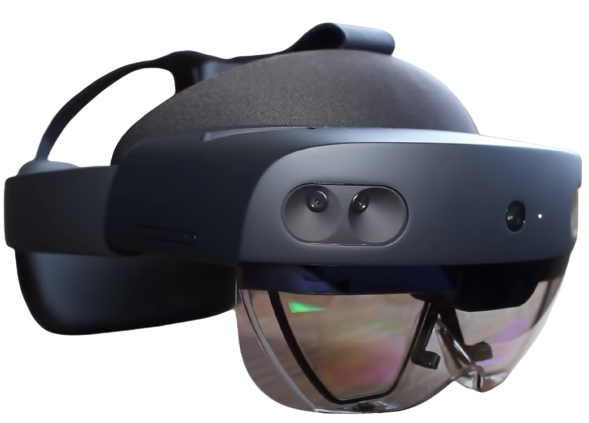
Microsoft’s HoloLens 2 was released in 2019 and is still ahead of its time. The $3,500 headset is a pioneer for AR. Offering consumers only a glimpse of what could come in their future, which they have otherwise only seen in movies. The technology behind HoloLens 2 is targeted only for enterprise and business clients – its not ready for consumer adoption quite yet.
That’s why although you could buy the headset, its price puts it out of reach for most. Microsoft has marketed it towards the enterprise market rather than going after gamers or tech enthusiasts, and by doing so, the company has avoided the pitfalls realised by team behind the infamous Magic Leap One. The cost of entry into the next generation of technology is less daunting for enterprise, so it made sense.
The device itself weighs 566 grams – cutting just 13 grams from its first generation model. In comparison to more familiar devices, its about 60 grams heavier than a Quest 2, but roughly 40 grams lighter than a PSVR headset. However, by storing much of its mechanics at the back of the device, alongside the dial for the head strap, the HoloLens 2 feels more comfortable than most VR headsets. A facial pad cushions the device nicely to your forehead. There is certainly little to complain about regarding comfort.
You can flip the visor upward instantly to remove the lenses from your sight when needed, without having to remove the entire headset like some other AR devices require. The dial adjustment at the back allows you to find the best fit easily, by altering the strap across the top of your head.
The field of view (FOV) has been increased considerably too, from 30 degree in HoloLens 1 to 52 degrees in HoloLens 2. This is perhaps one of its most important improvements Microsoft made, as a higher FOV is something users deem crucial to the experience of any headset.
Microsoft recently won a contract which will see it deliver the U.S. Army more than 120,000 custom devices based on its HoloLens augmented reality headset. The contract is said to be worth up to $21.9 billion over a 10 year period.
Google Glass Enterprise Edition 2
Price: (from) $999 Buy: Google.com
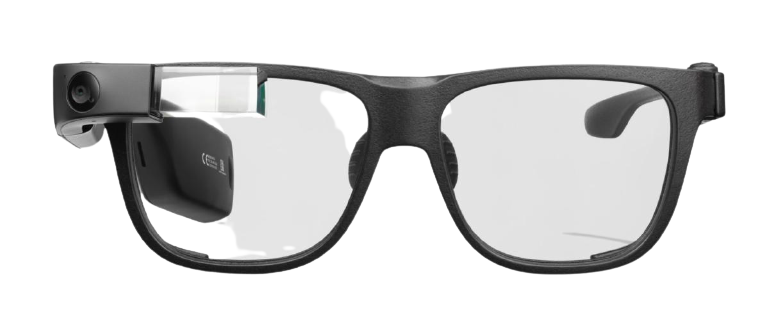
The primarily use of the Google Glass will be with those whose jobs are in construction or on factory floors, as well as in the medical field and other areas that can make use of a much simpler heads-up display. The Google Glass is to AR what the Quest 2 is to VR. It may not be the best in its field technically, but is a limited model with more mass appeal. Those that don’t require something like a full-blown mixed reality device such as the Microsoft HoloLens, may find the Google Glass fits the bill.
Again, this is another enterprise product, so it’s not designed for everyday consumer use. Its by far the cheapest AR device though. High prices have restricted mass adoption for AR and at less than a thousand dollars, its heading in the right direction. If we compare it to a VR device like the Quest 2, Oculus found mass adoption becomes much viable when priced in the $300-400 range. If AR is to compete, it still has a lot of work to do.
Vuzix M4000
Price: $2,499 Buy: Vuzix.com

The Vuzix M4000 is an AR Smart Glass built for the workplace and is ideally suited for use in production, field service and warehouse logistics. The Vuzix M4000 can record and stream videos in 4K and can take 12.8 MP photos.
At $2,499 the Vuzix is more expensive than the (failed) Magic Leap One, and pushing towards the price of the Microsoft HoloLens 2. Does it belong there? Maybe.
The Vuzix M400 sets itself apart from the others with its 4K video quality and the biggest draw it the fact that it’s also the lightest smart glass on the market right now. However, the frame lacks firmness. As such, it reduces the amount of use cases it’s feasible to be used for. For example, it would be unlikely that it could be extensively used in a heavy industrial environment.
Here is a list of some AR Smart Glasses coming soon:
Apple glasses
Price: TBC Release date: TBC
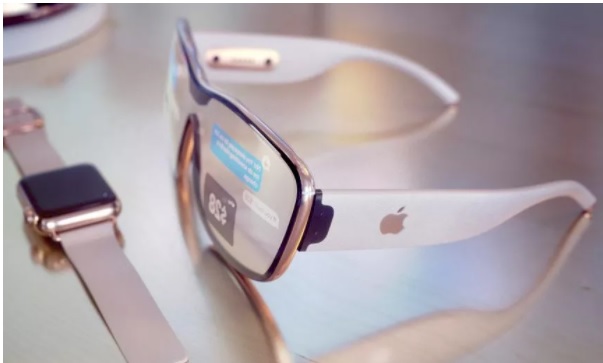
As is often the case with Apple products – they are shrouded in mystery. The potential release of an AR device produced by the company is even more so. Numerous patents have been filed for an AR capable device as early as 2017, and yet we are far from anything official. Rumours come and go but are starting to pick up traction in recent months suggesting that Apple plan to release something as early as 2022.
According to Jon Prosser (a reliable tech leaker), the Apple device will be called Apple Glass and will be capable of displaying information on both lenses, with the user controlling them via hand gestures both on and in front of the frames.
There is even a rumour that Apple will first release its own VR headset, before venturing into the AR world. In May 2020, Apple confirmed it had acquired NextVR, a start-up company which produced virtual reality content from the likes of the NBA and Fox Sports.
While it’s unclear how this could impact any potential AR glasses, it’s only logical that the start-up’s expertise will contribute to product design in some fashion. Whatever the case may be, things tend to gather pace much more quickly when Apple do get involved in something.
Facebook Ray Ban Smart Glasses
Price: TBC Release date: Sometime 2021
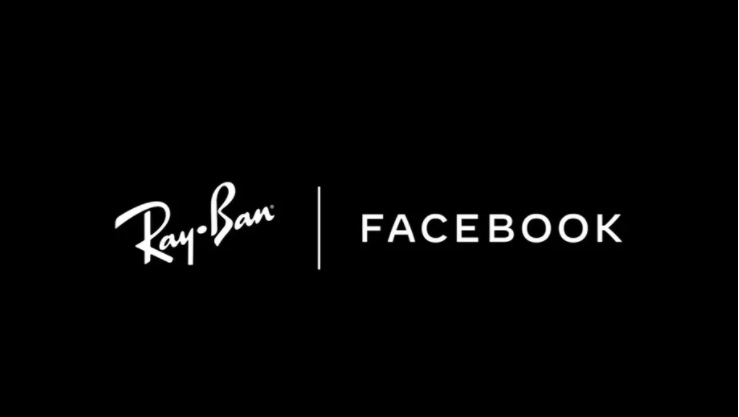
The partnership between these two companies definitely sparked a lot of early interest. However its since been said that Facebook’s Ray-Ban partnership is for smart glasses will actually come without an integrated display. So it appears they will be more like regular spectacles with the ability to capture images and videos and we surely cant classify that as augmented reality. Whether they spring a surprise remains to be seen. They aren’t due out until late 2021.
“The first product we’ll have in that space, it’s — I’ll set expectations — its not going to be anywhere near where we want to eventually go,”
Facebook CFO David Wehner
NReal Light
Price: $670 (approx.) Release date: Q2 2021
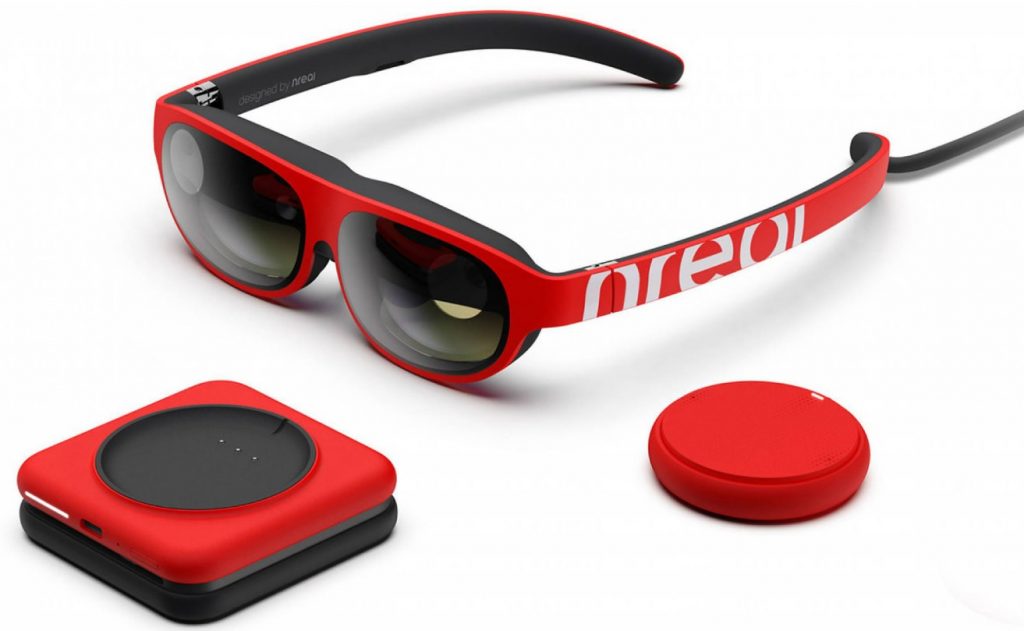
Nreal has actually already begun selling these new augmented reality (AR) glasses. They started in South Korea during the summer last year, expanding into Japan during October. Both roll-outs were in partnerships with telecommunication companies, LG U+ and KDDI, respectively.
The same system will be in use for its European launch, with Vodafone announcing a rollout that will begin Q2 of this year. The telecom giant will initially launch the Nreal Light in Germany and Spain followed by more countries over the course of 2021. The augmented reality glasses will of course require a smartphone connection, so the device will be sold alongside Vodafone’s Gigabit 5G network.
“European consumers will be able to experience the future through Nreal Light. They’ll enjoy a new way to see and interact with their favourite apps in a 3D mixed reality environment on Vodafone’s 5G network. We’re excited to be making Nreal Light available in Germany, Spain and other European countries in partnership with Vodafone as we continue our mission to make Mixed Reality accessible to consumers around the world,”
Nreal CEO Chi Xu
These glasses will use a USB-C connection, making the Nreal Light compatible with the latest Android smartphones. They will offer consumers a lightweight mixed reality (MR) solution, an interesting alternative to much larger enterprise devices such as the Microsoft HoloLens 2 – at a fraction of the price. In South Korea the glasses retail for 699,000 KRW, which works out to about £450 GBP/€510 EUR).
Vodafone hasn’t yet revealed the pricing structure for Nreal Light in Europe, but expect something in that price region. For developers interested in taking advantage of the cheaper Smart Glasses, the Nreal Light Dev Kit will retail for $1,199.
Nreal Light will include features such as 6 degrees-of-freedom (6DoF) tracking with a 52° field of view (FoV), plane detection and image tracking. There will be microphones and speakers built into the frames too.
Nreal say that their device will be ‘compatible with most existing Android smartphone applications’. Nreal have potentially got one of the first mass-market AR Smart Glasses on their hands, offering users the chance to watch media on the go, catch up with social media and shop online.
Lenovo ThinkReality A3
Price: TBC Release date: Q3 2021
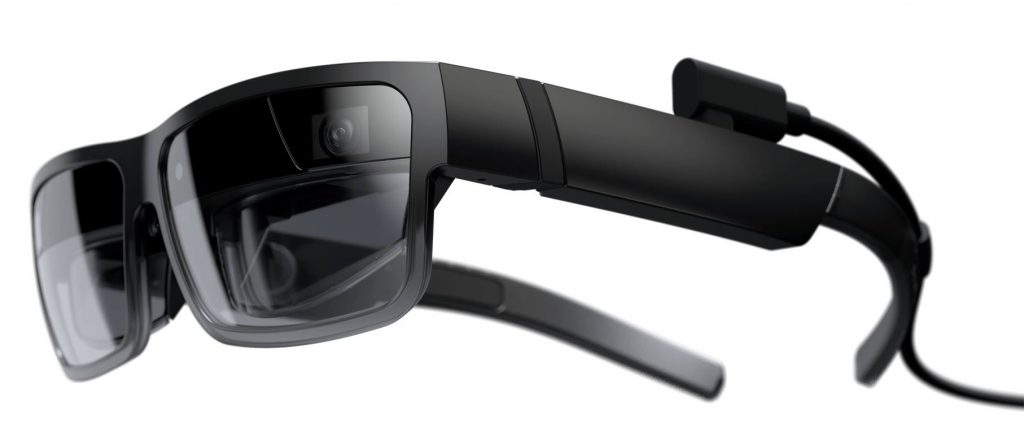
Lenovo has said it anticipates that general use cases for ThinkReality A3 would include the use of virtual monitors, viewing 3D objects, and immersive training. The AR glasses are powered by a Qualcomm Snapdragon XR1 with a 1080p display. The company say the ThinkReality A3 can show “up to 5 virtual displays” at one time, for greater and work productivity. You can wear them to create a private workplace from anywhere – particularly useful when dealing with sensitive information in a public area.
There will be a single 8MP RGB camera which provides 1080p video for remote expert training, and dual fisheye cameras provide room-scale tracking. The device weighs in at a comfortable 130g, which they say helps reduce user fatigue. They’re also foldable, so they can easily be tucked away when not in use. They will also have swappable lenses which allow you to choose appropriate tint levels and side shielding. A choice of three different arms and three different nosepieces will also be included, so users can adjust them to find the best fit.
The enterprise-focused device doesn’t have a confirmed price tag just yet but Lenovo say the ThinkReality A3 will be available “in select markets worldwide starting mid-2021”.
